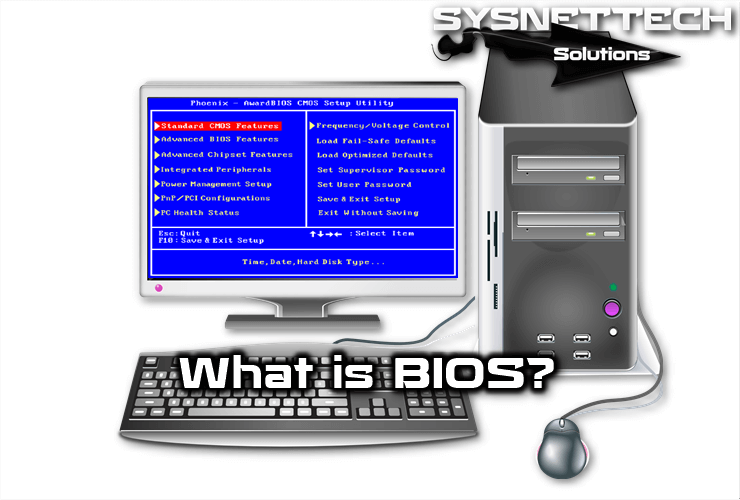A twisted-pair cable is a connection in which two insulators are crossed to have less interference, increase power, and reduce the crosstalk of adjacent wires.
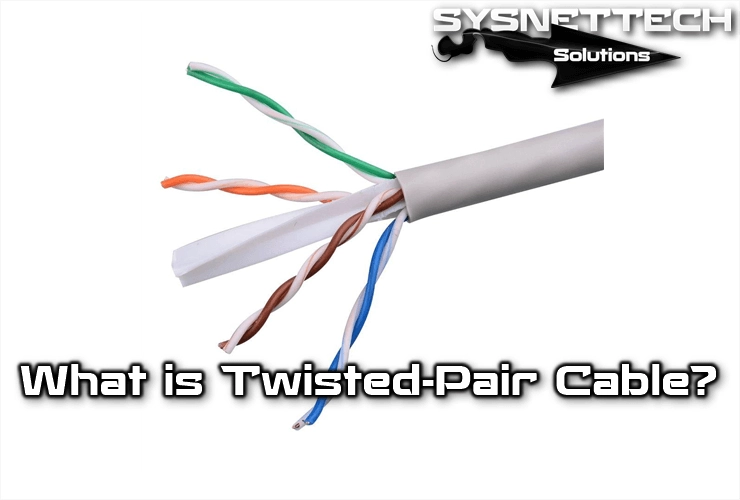
What are Twisted Pair (UTP, FTP, STP SSTP, SFTP) Network Cables, Types, and Categories?
Cable Crossover reduces interference because the loop area between cables that detects the electrical connection in the signal is increased.
In double balancing, two wires typically carry parallel and adjacent signals in differential mode combined with subtraction at the target.
Since both cables undergo similar EMI, the noise of the two cables amplifies each other in this inference.
Braid rate, often defined as turns per meter, is part of the specifications for a particular cable type.
The lower the number of turns, the lower the crosstalk attenuation.
In most residential telephone connections, where pairs are not twisted, one member of the pair is closer to the source than the other. Therefore, it is exposed to slightly different EMI levels.
Twisted pair cables must use RJ45 connectors to join the different hardware elements that make up the network.
Some cables use only four of the eight pins for data transmission. These are connected to pins 1, 2 (to transmit), 3, and 6 (to receive) of the RJ45 connector.
AWG is a standardization body for wiring. For example, you may find that a particular wire consists of a pair of 22 AWG wires.
AWG refers to the thickness of the threads. AWG decreases as the thickness of the cables increases.
The telephone line is available as a reference point and is 22 AWG thick. A 14 AWG gauge wire is denser, and a 26 AWG wire is thinner.
Twisted-Pair History
Twisted-pair cables are one of the earliest cables, appearing in Alexander Graham Bell’s first installations in 1881.
This type of cable consists of wires made of copper or aluminum. These are knitted together to ensure stable electrical properties and also to prevent interference from nearby cables.
This type of cable makes sense to use when the LAN is on a limited budget or if it will be a simple installation with simple connections.
This type of cable is not used when a high level of security is required in the LAN area or when the transmission speed is high, and there are long-distance networks.
Twisted-Pair Cable Structure
A twisted-pair cable consists of an inner conductor insulated with a colored polyethylene layer.
Under this insulator is another layer of polyethylene insulation, which prevents cable corrosion because it has an antioxidant substance.
Usually, this cable is comprised of pairs or groups of pairs rather than units, known as multi-pair cables. That is, the wires are braided to increase the resistance of the cable pair.
In the case of a multi-pair of four pairs (eight wires), the colors of the insulator are standardized.
When the cables are already produced unidirectionally and insulated, each of them is connected according to its color.
The resulting pairs combine and form subgroups, which combine into groups. Groups give rise to superunits, and unions of superunits form the cable.
Connection Types
UTP cables form Ethernet segments and can be used as straight cables or Crossover cables, depending on their use.
- Straight Cable: These cables connect a hub device to a network node. Each lead must comply with the same configuration standard (568A or 568B). This is because the hub is the center that passes the signal.
- Crossover Cable: This type of cable is used when connecting elements of the same kind: two routers and two hubs. It is also used to directly connect two computers without two routers or anything in between. One standard will be used at one end of the cable, and the other standard will be used at the other end to make a Crossover cable.
Twisted-Pair Cable Types
1) UTP (Unshielded Twisted Pair)
They are unshielded twisted pair cables used for different local network technologies. So, it is cheap and easy to use but produces more errors than other types of cables. There are limitations to operation over long distances, especially without a signal repeater.
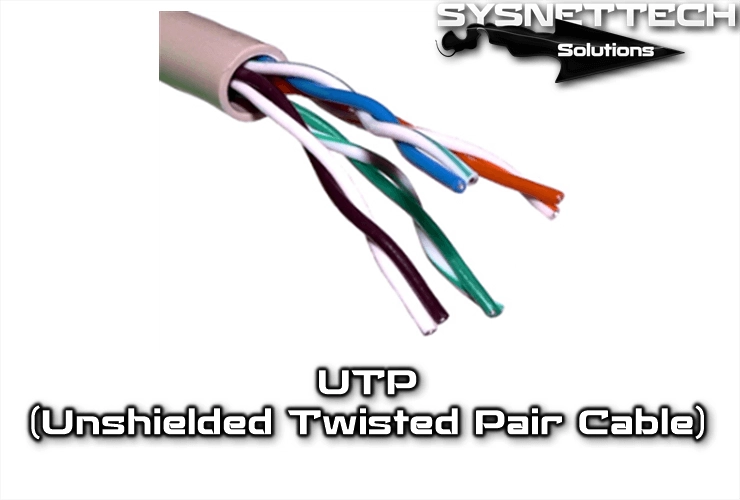
Additionally, there is no plastic separation device between each pair of cables to isolate them from the other pairs.
It is used in short-distance networks because it is more exposed to noise or interference. If a signal repeater is not used very often, the signal will be distorted, and healthy data transmission will not be ensured. UTP cables are inexpensive and typically have a characteristic impedance of 100Ω.
These cables were used in the home telephone network, two twisted pairs with RJ11 connectors. However, they are also used in 4-pair configurations using RJ45, DB25, or DB11 connectors.
2) FTP (Foiled Twisted Pair)
Twisted pairs of FTP cables have a protective cable based on a plastic separator and non-conductive material, separating the cable pairs from each other.
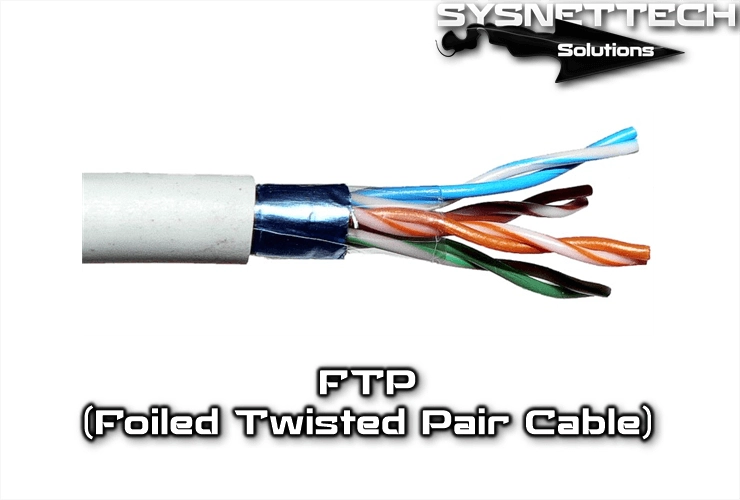
FTP also includes an outer shield made of aluminum that holds all the twisted pairs together and contains a protective material.
However, FTP cables are not as good as STP ones. However, it is better than UTPs in terms of distance and noise isolation. These cables commonly use the RJ45 connector. As a result, their characteristic impedance is 120 Ω.
3) STP (Shielded Twisted Pair)
STP has copper cables insulated with a certain number of aluminum braids grouping twisted pairs within the protective sheath. STP is noise-resistant due to the amount of insulation around a set of cables.
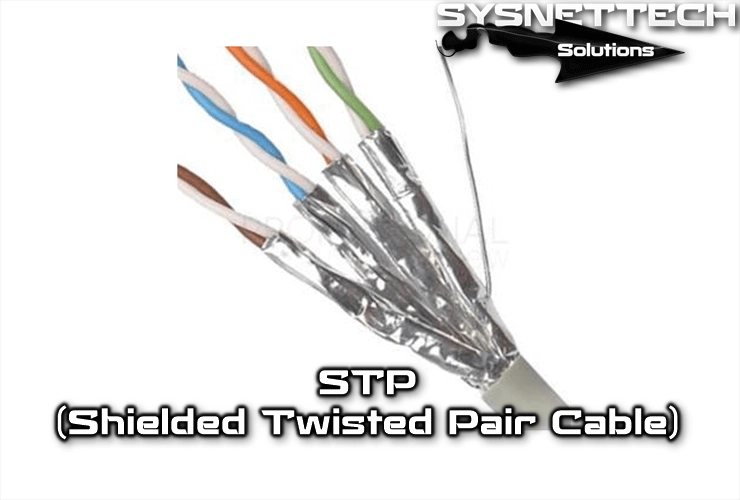
We use it in computer networks such as Ethernet or Token Ring structures. However, it is, of course, more expensive than the UTP version.
We use STP cables in environments that require higher performance, such as Ethernet standards, where high bandwidth, low latencies, and low bit error rates are needed.
These cables are more expensive than others. Allows longer distances without a repeater. So, their characteristic impedance is 150Ω. Additionally, it is generally compatible with RJ49 connectors.
4) SSTP (Screened Shielded Twisted Pair)
It is similar to the STP cable type but has an aluminum-coated shielding wire braid covering all of the twisted pairs.
SSTP cables, as well as other cables, provide excellent protection against high noise and interference. It offers the highest performance and a fantastic capacity, especially for transmission over long distances.

If there is a high voltage frequency within the SSTP cable, equipment grounding using shielded wire fencing will be used to eliminate it.
These network cables are the cables with the highest cost. Plus, it’s compatible with RJ45 connectors. Moreover, SSTP characteristic impedances are 100Ω.
5) SFTP (Screened Foiled Twisted Pair)
SFTP network cable is based on the structure of FTP cable. However, this cable contains an LSZH metal braid around it to increase its insulation against noise.
This metal wire mesh will connect to the ground of the equipment, preventing possible voltage surges.
These improve the performance of an FTP cable, although they are inferior to SSTP cables.
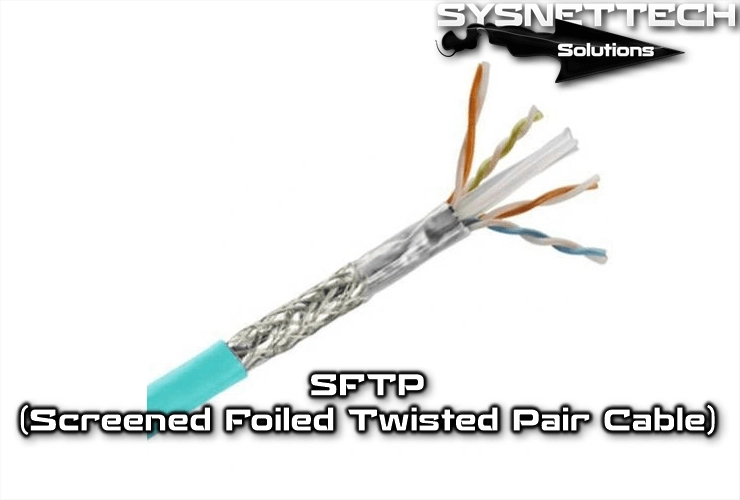
UTP Cable Categories
The 568A Commercial Building Cabling Standard specification of the EIA/TIA (Electronic Industries and Telecommunications Industries) association specifies the type and transmission speed of the UTP cable to be used in network design.
Category 1 > UTP
Voice-quality braided telephone cable is not suitable for data transfer. However, the transmission characteristics of the medium have a frequency higher than 1MHz.
Category 2 > UTP
It uses unshielded twisted pair cable. The transmission characteristics of the medium are a frequency higher than 4 MHz. This cable consists of 4 twisted pairs of copper wires.
Category 3 > UTP
It has a typical 10 Mbps transmission rate for Ethernet. We use this type of cable in 10BaseT Ethernet networks. In addition, the transmission characteristics of the medium operate at a frequency higher than 16 MHz.
This cable consists of four twisted pairs of copper wires.
Category 4 > UTP
The transfer rate is up to 20 Mbps, and the transmission characteristics of the medium are 20 MHz. This cable consists of 4 twisted pairs of copper wires.
Category 5 > UTP
This is a Category 4 upgrade and transmits data at up to 100Mbps. The transmission characteristics of the medium are at a frequency higher than 100 MHz. However, this cable consists of four twisted copper wire pairs.
Category 5e > UTP/FTP
This is a Category 5 upgrade. Used in 100 BASE-TX/1000 BASE-T Ethernet networks, this category of cable transmits data at up to 100Mbps. In addition, its transmission characteristics have a frequency higher than 100 MHz. This cable consists of four twisted pairs of copper wires.
Category 6 > FTP/STP/SFTP/SSTP
An upgrade over Cat5, it transmits data at up to 1 Gbps and is rated higher than 250 MHz.
Category 6e > FTP/STP/SFTP/SSTP
It is a more advanced version of Cat6 and efficiently transmits data up to 10 Gbps. The transmission characteristics of the medium are at a frequency higher than 500 MHz.
Category 7 > FTP/STP/SFTP/SSTP
It is an improvement on Category 6 and transmits data at up to 40 Gbps. The transmission characteristics of the medium operate at a frequency higher than 600 MHz.
Category 7a > SFTP/SSTP
It is an improvement to Category 7, supporting multiple transmissions. This Cat7a transmits data at up to 40 Gbps. The transmission characteristics of the medium are at a frequency higher than 1000 MHz.
Category 8 > SFTP/SSTP
It is an improvement to Category 7a, transmitting data at up to 40 Gbps. In addition, the transmission characteristics of the medium have a value higher than 1200 MHz.
Category 9 > 8 Dual SFTP/SSTP
The media transmission characteristics of Cat9 include a frequency higher than 25000 MHz.
Category 10 > 8 Dual SFTP/SSTP
The media transmission capabilities of Cat10 operate with a frequency higher than 75000 MHz.
Advantages of Twisted Pair Cable
We have the advantages of ease of use and installation and low production and acquisition costs. It also provides extensive data transmission capacity, fast connectivity in local area networks, and low latency in LAN networks.
Disadvantages
Twisted-pair cables are not immune to noise or interference. However, we can count the limited bandwidth, the limited distance needed to use repeaters, and error rates at high speeds among the disadvantages of fiber cables.

